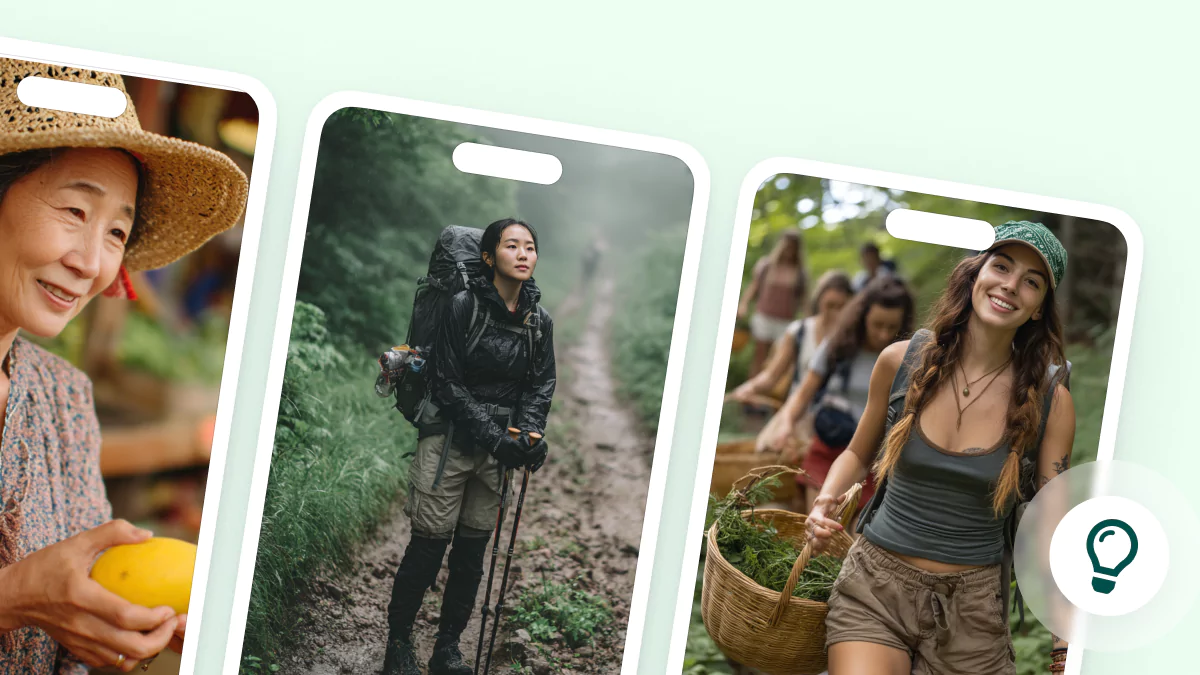
Need allies who can help you advocate for responsible, ethical, and sustainable travel?
Micro-influencers may be the partners you’ve been looking for.
With smaller but more engaged audiences than mega-influencers, micro-influencers offer trust, transparency, and grassroots storytelling into an industry that desperately needs it.
Let’s take a closer look at how you can find, vet, co-create with, and scale the impact of travel micro-influencers in a values-aligned way.
1. Partner with values-aligned influencers
Outline your brand’s sustainability values.
What exactly do you stand for? Carbon neutrality, regenerative tourism, local economic uplift, cultural preservation?
For instance:
Carbon neutrality entails ensuring that all greenhouse gas emissions from your operations are fully counterbalanced through in‑house reduction initiatives or verified offset projects.
Local economic uplift means supporting small, local businesses, allowing the community to benefit from tourism.
Cultural preservation involves respecting and protecting local traditions, languages, and ways of life.
Regenerative tourism means giving back more than it takes, helping nature and communities thrive.
Translate these commitments into a structured vetting checklist as follows.
Look for micro-influencers who:
Have a genuine passion for sustainable travel.
Credit local and Indigenous communities.
Show real understanding of ethical travel.
Practice low-impact travel habits.
Align with our brand values.
Ask direct questions in your outreach to be sure they’re the right fit, like:
How do you reduce your environmental impact during your travels?
Can you share a time you supported a local community abroad?
Have you ever given more than you’ve taken on a trip?
Without shared values, you risk greenwashing (profiting from the eco-friendly movement without genuine action) and audiences can spot this instantly.
To make sure you’re partnering with the right influencers, take advantage of the latest AI benefits in marketing. For example, Hightouch lets you track and analyze customer data and campaign results straight from your data warehouse. This can help you pinpoint which sustainable travel campaigns by your partners performed the best.
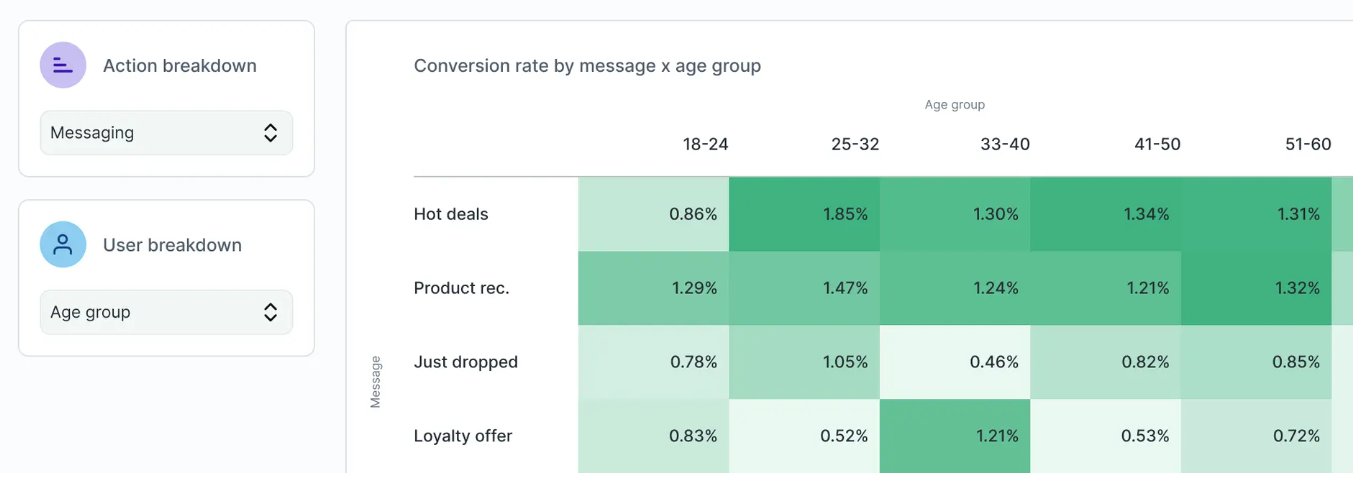 Image Source: Hightouch
Image Source: Hightouch
And HypeAuditor’s AI-driven search tool lets you filter micro-influencers by niche, location, values, and audience demographics.
Like you can use different tools to find emails of potential leads, you can use HypeAuditor to find partners that align with your sustainable travel campaign goals.
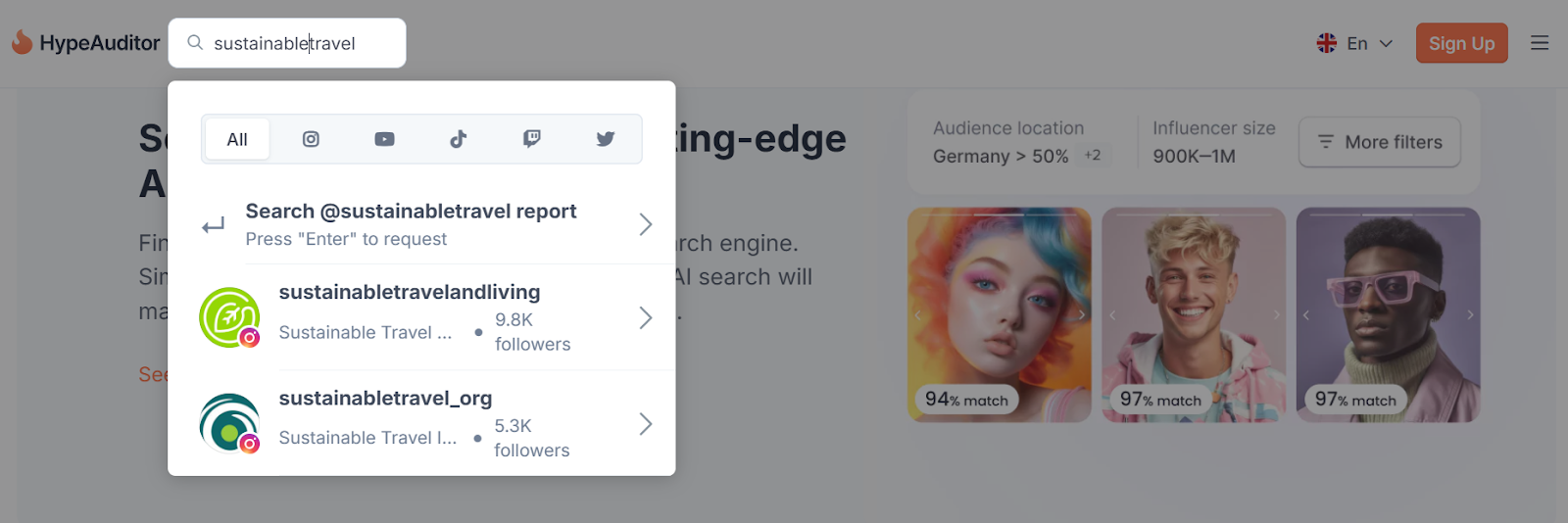 Image Source: HypeAuditor
Image Source: HypeAuditor
2. Prioritize niche engagement over reach
Identify niche sustainable travel creators who cultivate deeply engaged communities.
Travel micro-influencers may have fewer followers than travel mega-influencers, but their impact can run deeper. Their audiences are often tight-knit and highly engaged, which can encourage stronger trust, higher conversions, and more authentic word-of-mouth.
For sustainable travel brands, this supports you in having more meaningful connections with the right travelers.
When vetting, focus on influencers who speak to specific communities, like eco-tourists or regenerative travel advocates.
Focus on engagement indicators—like saves, shares, and authentic comments—since they better demonstrate an influencer’s ability to drive real action compared to superficial metrics such as like counts or follower numbers.
3. Use micro-campaigns
Run small, staggered campaigns with a focused message and timeline.
Choose an initial cohort of three to five micro‑influencers, each tasked with a unique narrative focus—whether that’s showcasing a community’s conservation success, guiding audiences through a slow‑travel journey, or capturing a zero‑waste adventure.
Spread the content over several weeks to build momentum and create natural engagement loops.
Limit each campaign to one platform for clarity. For instance, use TikTok for fast tips or behind-the-scenes moments. Use Instagram for travel visuals and Reels. And use YouTube for more in-depth narrative storytelling. (More on this in a bit.)
Most importantly, align each post with your sustainability values and track audience responses in real-time.
This approach keeps your messaging flexible, authentic, and budget-conscious.
For example, a campaign with three micro-influencers sharing eco-lodge experiences across Instagram Reels over a month can build sustained interest. Their combined storytelling can grow trust and credibility while keeping your costs low.
➜ Focus on content quality, consistency, and storytelling depth with these campaigns. Audiences respond to repeat, meaningful touchpoints more than they do to a single splashy moment. This makes your sustainable message more memorable and actionable.
More on storytelling in the next section.
4. Co-create narrative-rich, place-based content
Work closely with micro-influencers to craft stories rooted in local communities and sustainability efforts. (Consider using an Influencer CRM to keep communication on campaigns in one place.)
Give influencers control over the narrative, so their authentic voice and unique perspective can shine through. Also, be clear on any non-negotiables you might have, such as specific terms you’d like them to include or avoid.
More on this in the next section.
Provide prompts to inspire them, like:
Document traditional eco-friendly practices passed down through generations.
Highlight a local conservation project that is making a tangible difference.
Explore how local culture influences sustainable travel choices.
Share an experience that changed your view on sustainability.
Highlight a local artisan or conservation leader.
You can also share examples of long-form storytelling to guide influencers. Historical stories, like the one about Captain Speirs below, work well because they show the full picture, from beginning to end.
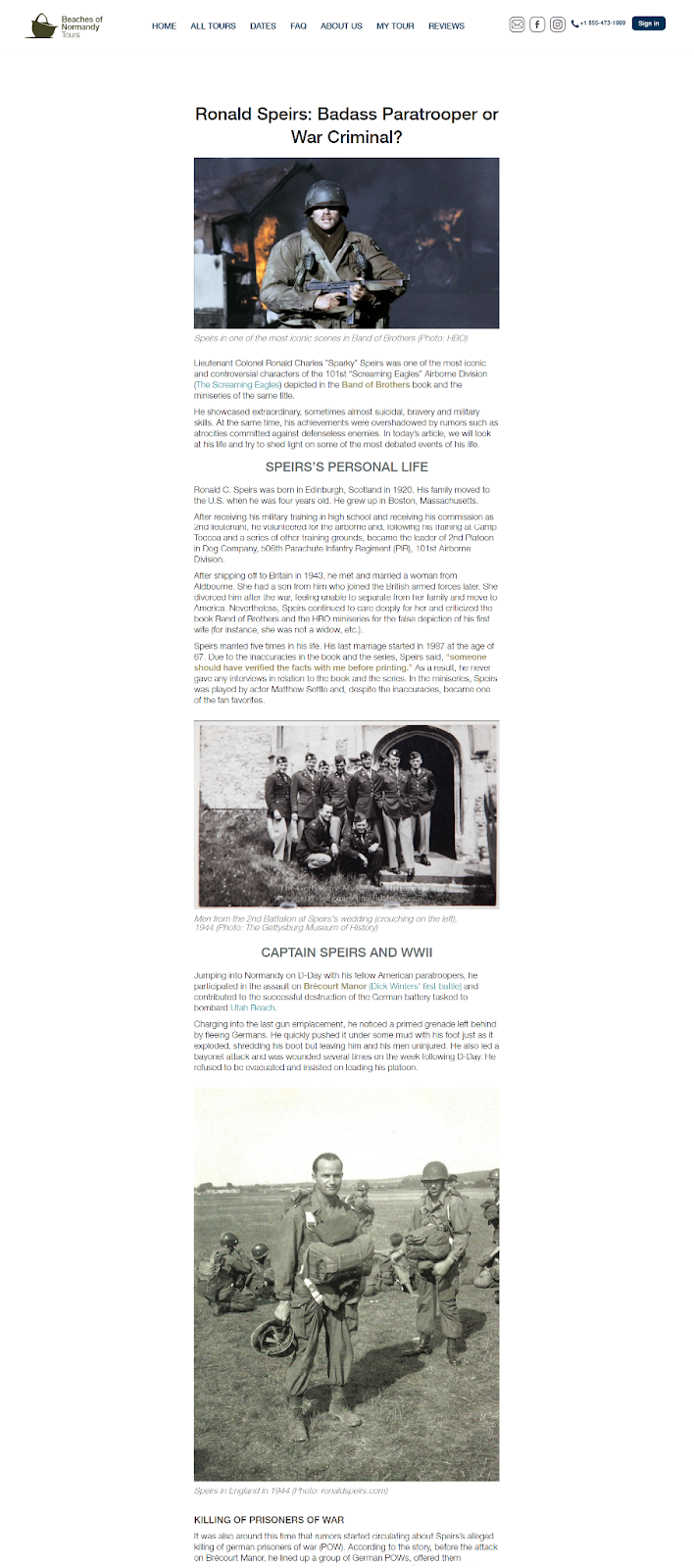 Image Source: Beaches of Normandy
Image Source: Beaches of Normandy
Just like Speirs’ story encourages people to see history from different angles, sustainable travel influencers can connect with their audiences by exploring the rich (and sometimes difficult) histories of the places they feature.
This helps travelers learn more and build a stronger bond with these destinations. Which can also help inspire more thoughtful and responsible travel.
Take note of which stories and content styles resonate best with your audience so your influencers can create more of them. (Remember, you can use an AI data tool like Hightouch or a social listening tool to uncover these.)
5. Provide education and tools for sustainable storytelling
Provide your partners with an easy-to-use toolkit containing essential resources for sustainable storytelling.
This helps influencers share your message accurately and respectfully.
In your toolkit, be sure to include:
Clear talking points for sensitive issues
Cultural sensitivity and DEI guidelines
Sustainability FAQs with answers
Photography and wildlife ethics
Your non-negotiables
Your style guide
Take this one step further by hosting pre-campaign workshops to align on messaging and values.
6. Mix platforms for story depth and audience breadth
Increase your target addressable market (TAM) by showing up on a variety of platforms.
Use each one strategically and match influencers to the right platforms.
For instance, try using:
LinkedIn for B2B or industry-focused content. Have influencers share thought leadership content, highlight the impact of sustainable travel, and engage with professional travel networks.
TikTok for immersive day-in-the-life stories. Have micro-influencers share authentic videos that resonate with younger, eco-conscious viewers.
YouTube for deeper destination videos. Ask your partners to capture culture, history, and practical tips that build emotional connections in long-form videos.
Instagram for visual storytelling. Ask your influencers to hop on sustainable travel trends and use trending audio in their Reels and images.
➜ Be sure to also secure the content rights to these so you can repurpose influencer posts across your blog, email newsletters, and paid media.
7. Prepare for backlash with protocols
Ensure your team and influencers are clear on the steps to take if a sensitive issue arises, such as misrepresenting a sacred site or using local language incorrectly.
Create a simple checklist or flowchart for them to follow so nobody wastes time figuring out next steps.
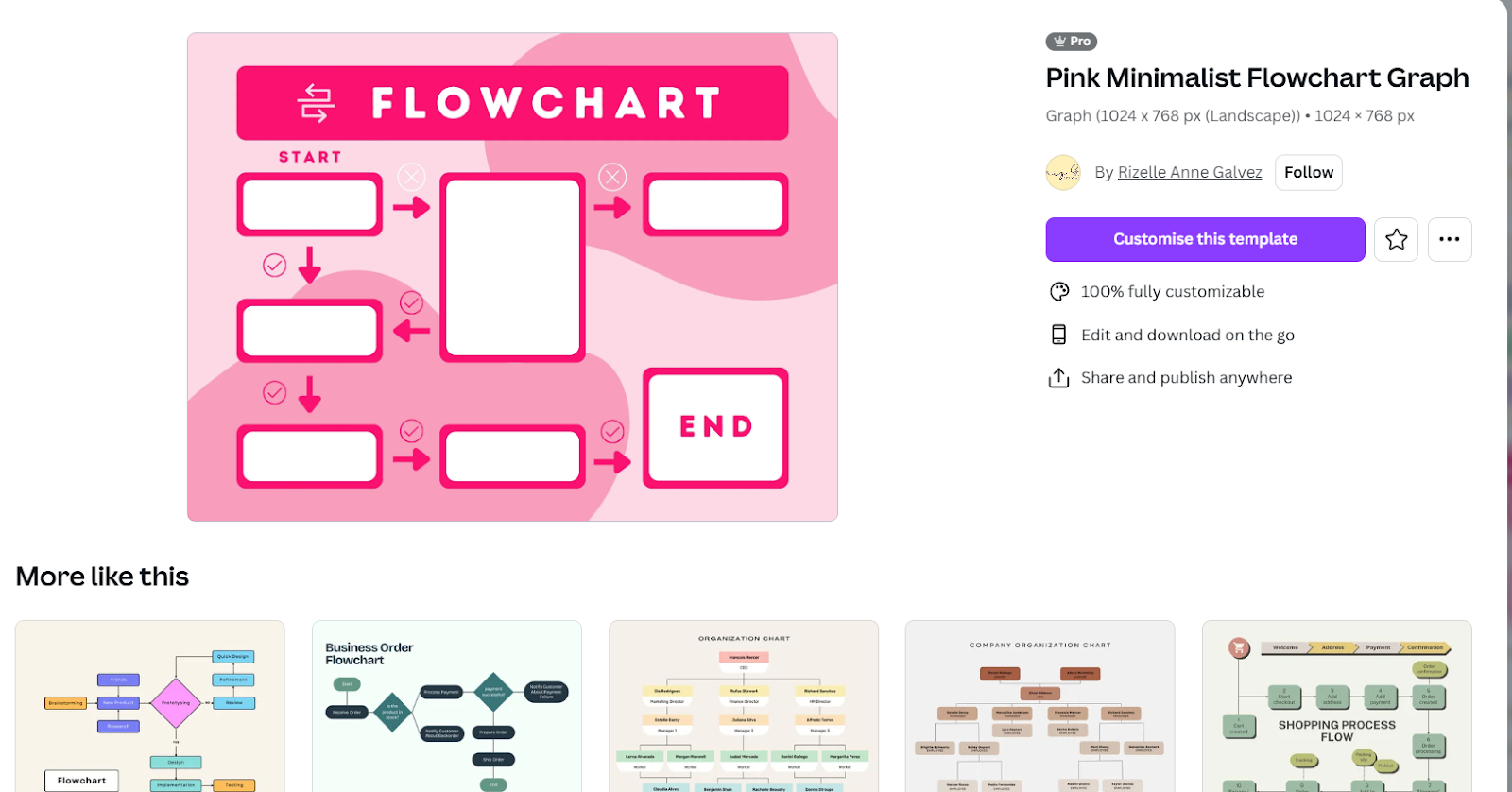 Image Source: Canva
Image Source: Canva
(There’s an example checklist for you below.)
Crisis response checklist for influencers and teams
Use this if you spot a problem or get negative feedback on your sustainable tourism content:
Stop and assess
Pause posting or sharing immediately if you notice a potential issue.Report quickly
Contact the campaign manager or designated crisis lead right away. Don’t try to handle it alone.
Gather facts
Note what happened, when, and any relevant context or feedback from the audience.
Hold public comments
Avoid responding publicly until you get guidance from the team.
Follow official response
Use approved messaging or statements to address the issue carefully and respectfully.
Apologize if needed
Offer a sincere apology if the mistake affected a community or individual.
Learn and adjust
Share what you learned so the team can update training and avoid repeats.
You can also poll your audience and local communities to gauge what topics they’re most sensitive about.
Then, offer them the opportunity to share more. Consider creating an anonymous feedback form or hosting a live Q&A session where followers can ask questions or express concerns directly. This helps you understand community values and avoid future missteps.
Encourage influencers and your team to stay open and listen without getting defensive.
Finally, plan regular check-ins with your influencers to discuss ongoing issues and adjust your messaging as needed.
Wrap up
Partnering with sustainable travel micro-influencers builds authentic connections and trust with your audience. Over time, these campaigns can expand your reach and deepen your brand’s impact in meaningful ways.
But it’s important to do this with intention.
To create successful, sustainable travel campaigns, remember to:
Partner with values-aligned influencers
Prioritize niche engagement over reach
Use micro-campaigns
Co-create narrative-rich content
Provide education and tools
Mix platforms strategically
Prepare for backlash
PS: Need a reliable platform to find aligned micro-influencers? Try HypeAuditor for free now.
FAQs
1. How do travel influencers get brand deals?
They pitch brands directly, join influencer platforms, or get discovered through consistent, high-quality content. A media kit and niche focus help.
2. What do travel PR agencies look for in influencers?
Authentic engagement, niche relevance, content quality, ethics, and a professional reputation.
3. Do travel influencers get paid or just get free trips?
Both. Many receive complimentary trips, and experienced influencers are also compensated based on deliverables or performance.
4. How can small brands work with travel influencers?
Target micro-influencers with aligned values and offer shared storytelling opportunities.
5. What makes a travel influencer successful?
Consistency, niche clarity, strong engagement, quality storytelling, and genuine audience trust.
6. How do you measure the return on investment (ROI) of a travel influencer campaign?
Go beyond likes. Track engagement depth, link clicks, bookings, local business referrals, and sentiment analysis.










